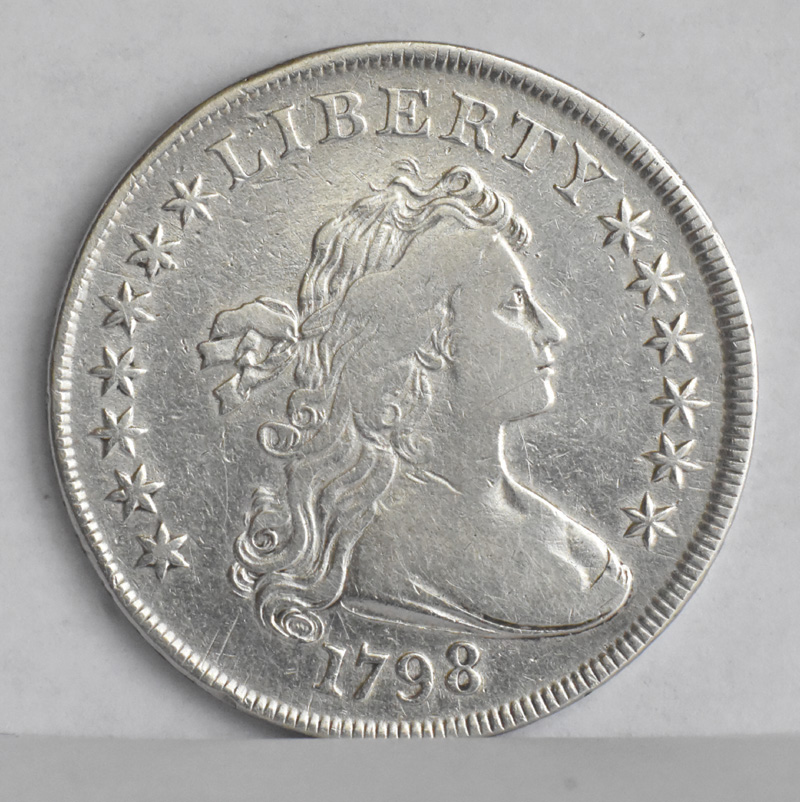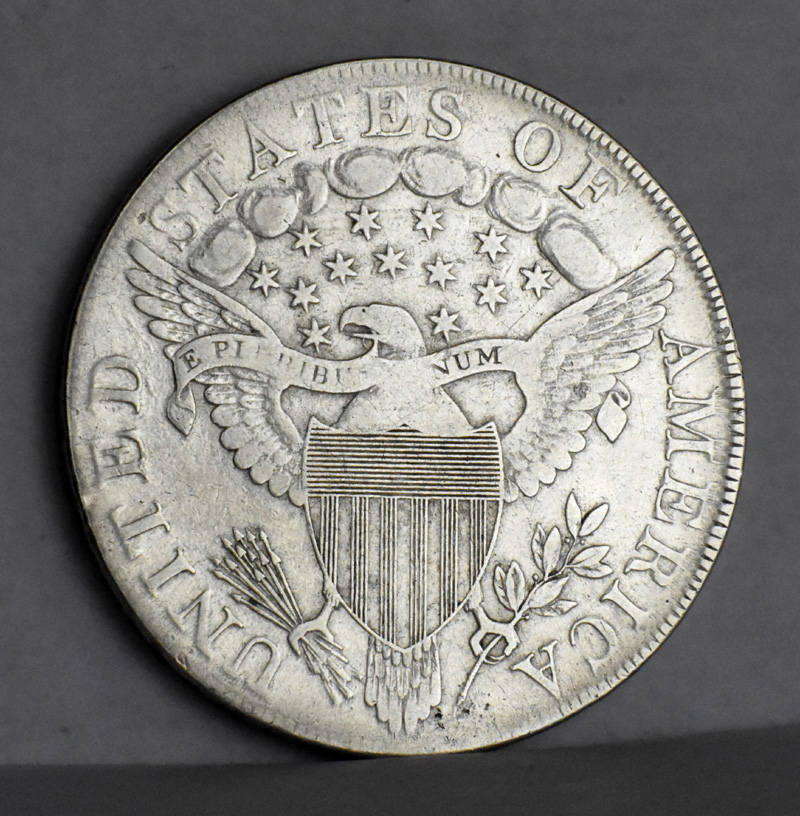Draped Bust Dollar
1795 - 1804
 |
The Draped Bust dollar was designed by Robert Scot and was first minted in Philadelphia in 1795, although the Smithsonian's Numismatic collection includes a 1794 specimen that has been plugged and a 1797 coin that is unique, containing 10 stars on the left of the obverse and 6 stars on the right, while all other issues were made with only 15 stars. Made of 89% silver and 11% copper, the coin contained just over .77 ounces of silver. The obverse of the coin is quite striking, being a substantial improvement over the earlier Flowing Hair design, but quality issues of the coin in AU or uncirculated condition are very rare and cost about $10,000 or more. The reverse design was of a small eagle surrounded by a wreathe  but was changed in 1798 to be a larger shield eagle as shown at right on my example. The 1804 issue is one of the rarest of all U.S. coins, with only 15 known examples. but was changed in 1798 to be a larger shield eagle as shown at right on my example. The 1804 issue is one of the rarest of all U.S. coins, with only 15 known examples. |
 |
| This is my example of the Draped Bust dollar coin, a 1798 issue with the newer reverse design. It is certified to be in VF35 condition and is worth about $1800. The coin has been cleaned, else it would be worth at least twice that amount. At one time years ago I owned a 1799 example of this coin but sold it for a nice profit when I needed some extra money. This coin is in the D case. | This is the reverse of the coin at left showing the revised design, which is called a Heraldic Eagle. There are also a large number of minor variations of the coin, common in those early days, and some are worth many thousands of dollars in good condition. | |
| In 1798 John Adams was president and Thomas Jefferson was vice president. Although the mint struck 327,536 of these Draped Bust dollars, it is not known how many were made with the small eagle and how many were made with the Haraldic Eagle. I cannot but wonder however, whether or not my coin was handled at some time by someone in the government or someone else in history. |